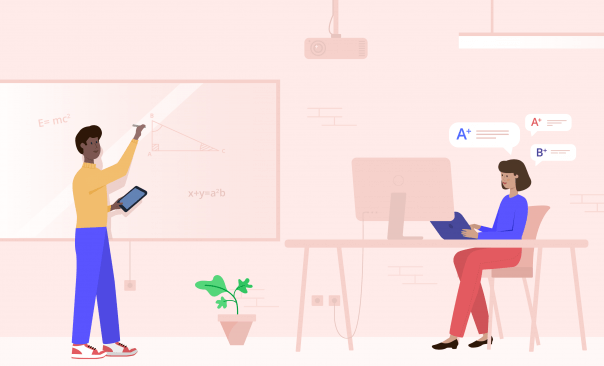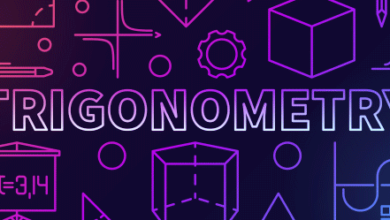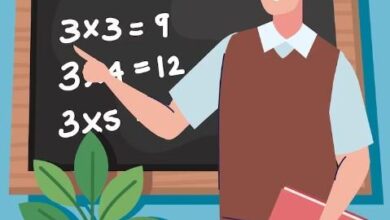Boosting Learning Outcomes: How Technology Tools For The Classroom Make a Difference

Learning outcomes are measurable skills, abilities or knowledge students should have by the end of a course. They are student-centered rather than teacher-centered, describing what students will do instead of what the instructor will teach. A good learning outcome complies with Bloom’s Taxonomy as it promotes knowledge & skills development in learners while making them life-long learners.
Fun Learning Methods
If you want your learners to engage with and remember what they learn, then it’s important that learning is fun. Studies have shown that fun can boost learning outcomes and increase retention. However, what is considered “fun” can vary greatly. For example, one experiment saw business professionals in suits playing in a ball pit to test whether they still valued having fun at work. It turns out that even senior executives still love to have fun, proving that inside every corporate suit is a carefree kid eager to let loose. Immersive technology tools for the classroom, such as virtual reality (VR), augmented reality (AR), and mixed reality (MR), help to create fun learning experiences. For example, VR allows you to create immersive simulations that will enable learners to practice their skills in a safe environment. Virtual labs also offer gamification so students can earn points, badges, logins, and accuracy scores to develop their enthusiasm for science subjects. It’s no wonder that students with a positive attitude towards their science lessons are more likely to progress in those subjects.
Breaking Up Teaching Methods
A key part of good teaching is to break up the instructional process into small pieces. This allows students to process the information more easily and helps them understand what they are learning. This can be done by providing examples, models or breaking the work into manageable chunks. It also involves scaffolding, a technique that supports student progress while still allowing them to work independently (for example, a teacher may give her students exemplary assignments and provide them with a step-by-step guide on completing them).
An instructor must choose optimal methods that properly support the desired learning outcomes and learner needs. For example, if an instructor wants her students to solve complex math problems, the instructor should consider how students will best process these concepts and then determine appropriate activities.
Students cannot successfully process the principles of solving these problems if the instructor chooses a lecture-style instruction method. In addition, students may not respond well to discussions, especially if they do not see the value of these interactions or feel that the instructor is giving them the “right answers” to win their participation points.
Boosting Engagement
Students engaged in the learning process are more likely to retain information and complete training programs. This is especially true when the material is interesting and relevant to their jobs. Fortunately, there are many ways to increase engagement during the learning process. One way to boost engagement is using fun learning methods that excite students about subjects. This can be done by providing different kinds of content, such as videos or games, to engage learners. Another way is by encouraging interaction between students. This can be done by introducing online forums where students can collaborate on assignments or discussions.
Lastly, boosting emotional engagement can help facilitate learning outcomes. This can be accomplished by encouraging social interaction opportunities, providing feedback, and establishing a positive work culture that recognizes employee achievements. Increasing student engagement is an essential goal for educators and school districts. With effective engagement, students are more likely to be motivated to learn and may be able to reach their goals. Educators should incorporate fun and interactive learning methods into their lessons to promote engagement and provide students multiple ways to show what they know. For example, instead of having students create a slide deck, they can make a video, record a podcast, or design an infographic.
Developing Recall
Recalling past successes enhances student confidence and optimism. It’s no wonder the practice is widely embraced as an effective way to boost learning outcomes. Unfortunately, recent research suggests that it is less effective than previously believed. The new finding that asking students to recall their success may not be enough to raise their PSE has extremely important implications for educators and school administrators.
The current study sought to discover whether asking students to recall their success would increase PSE for an important academic skill – writing ideation. In Experiment 1, students were assigned to a condition where they were asked to recall success in writing creativity (Focal ME recall), a situation where they were asked to identify successful writing in general (Non-focal ME recall), or a control condition. Focal ME recall was expected to be more productive than Non-focal ME recall because it focuses on a specific aspect of the skills under consideration.
In Experiment 2, the effect of the ME recall conditions was replicated, and an additional control was added to test the possibility that the impact of the two ME recall conditions was moderated by baseline PSE. Ease-of-retrieval also predicted posttest PSE in both experiments, but it did not appear to interact with the requirements.
The findings suggest that it’s critical to understand what types of memories students are using to construct their PSE. Students will draw negative conclusions about their abilities if a skill is difficult to recall. Similarly, the easier it is to identify examples of academic success, the higher their PSE will be.





